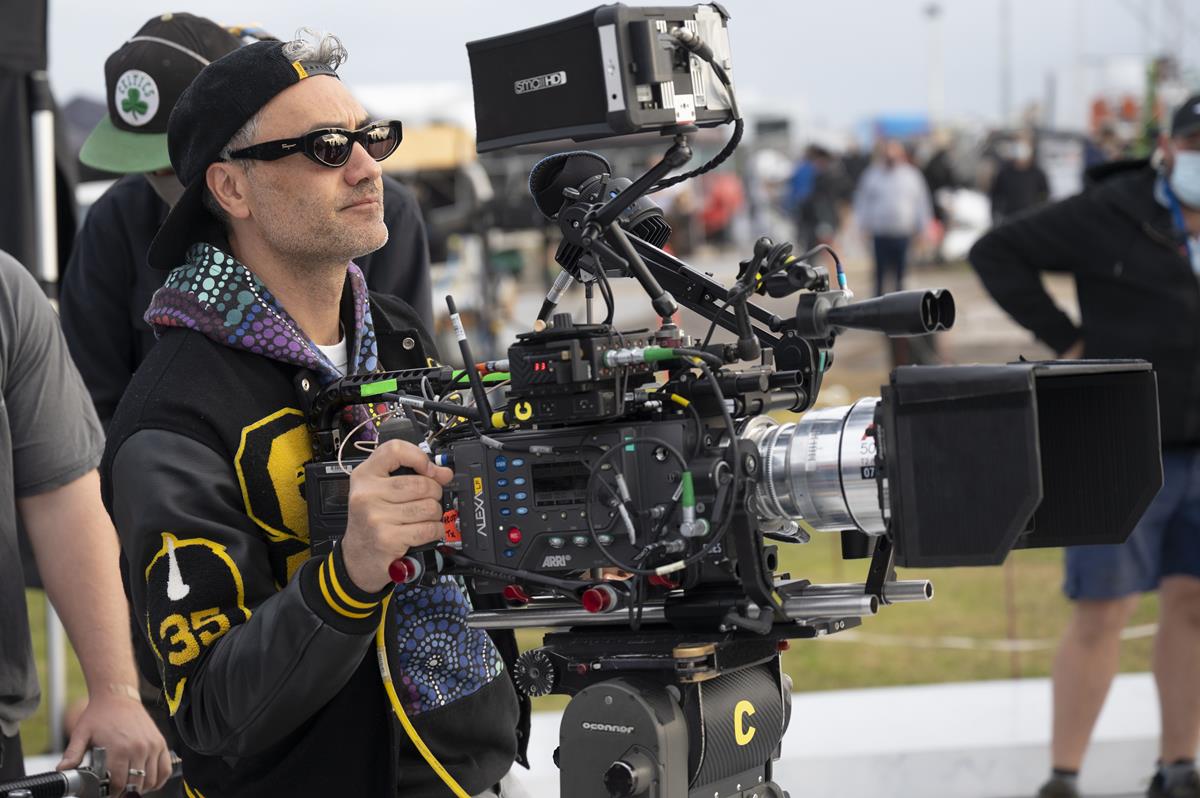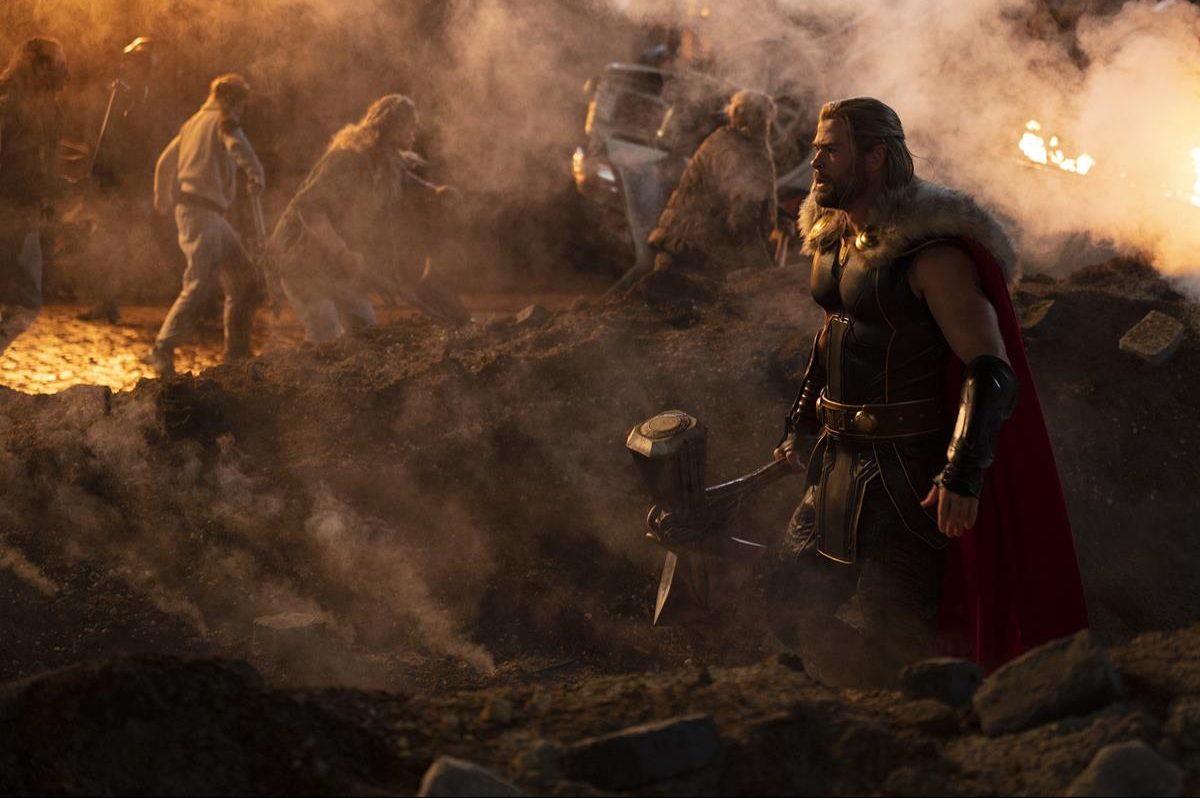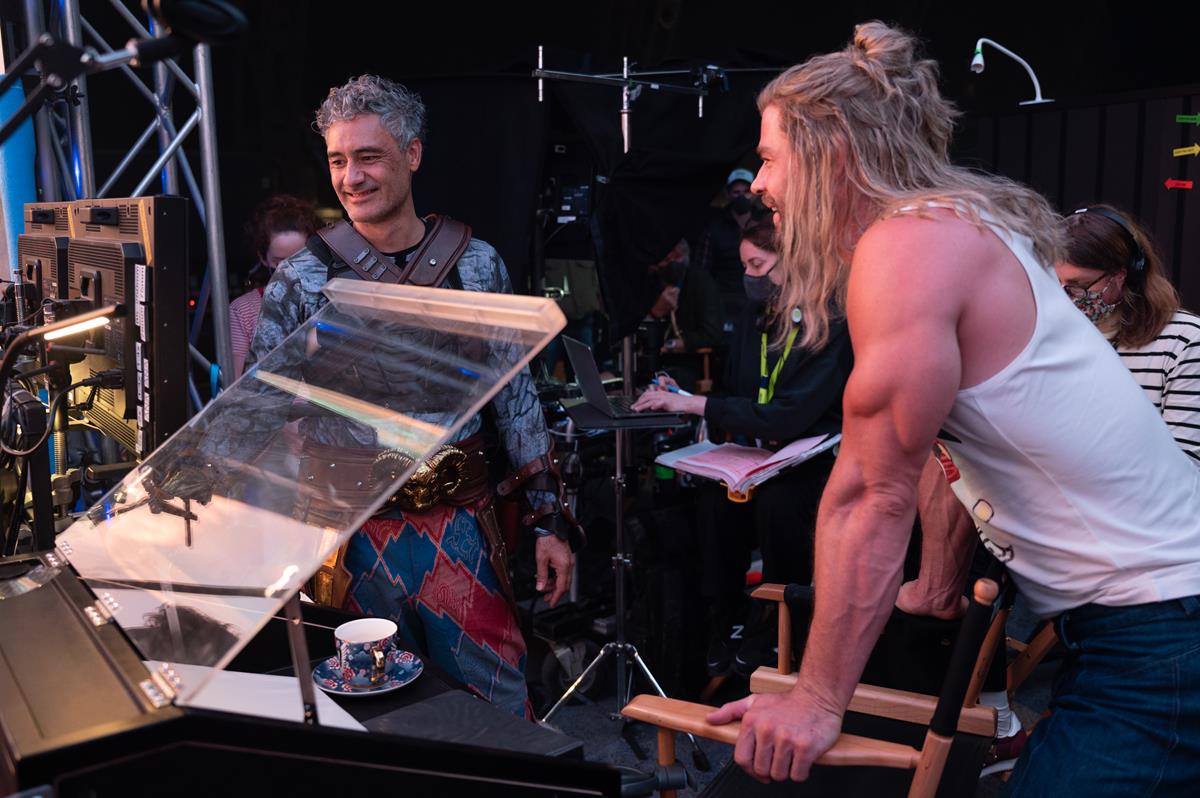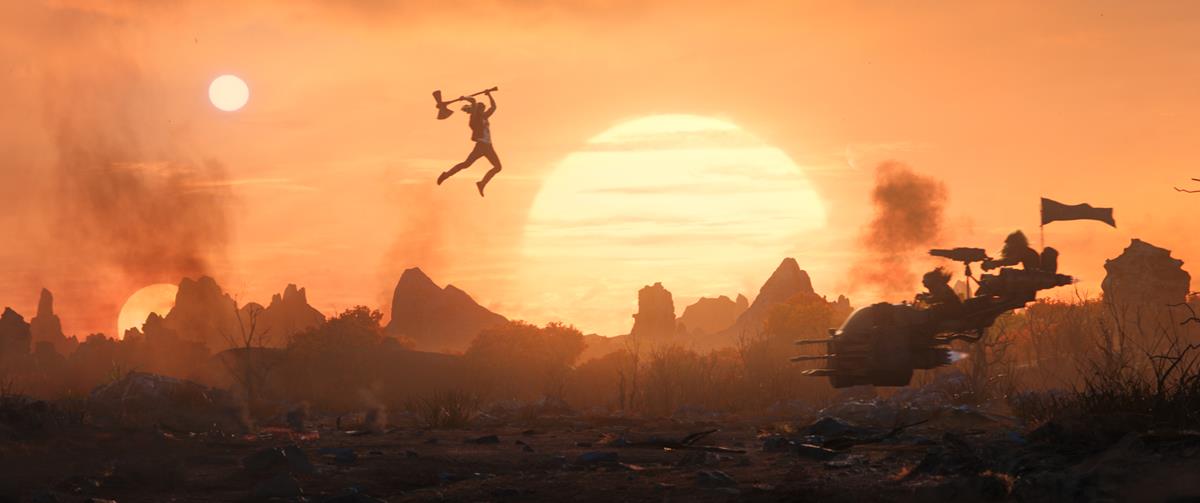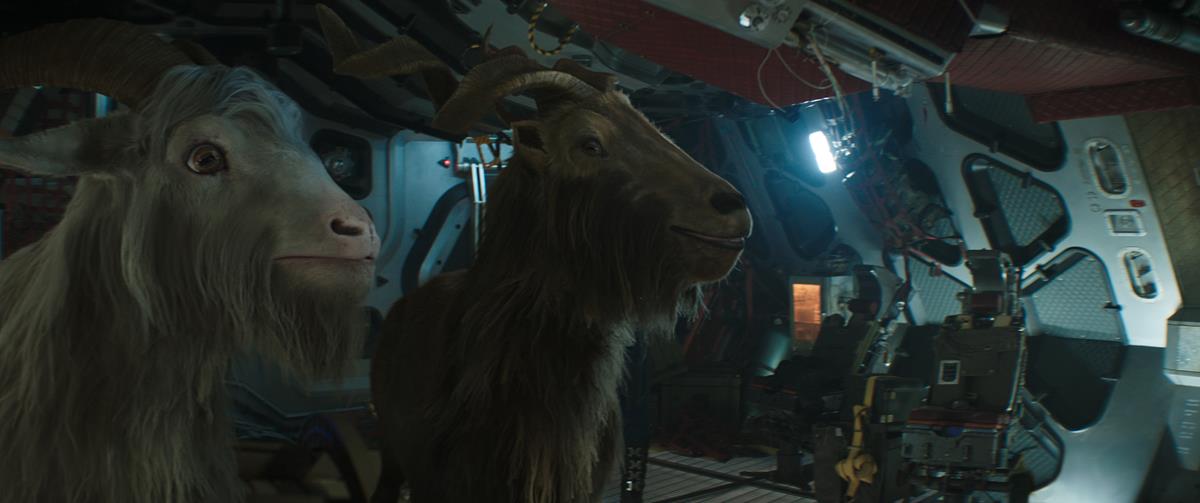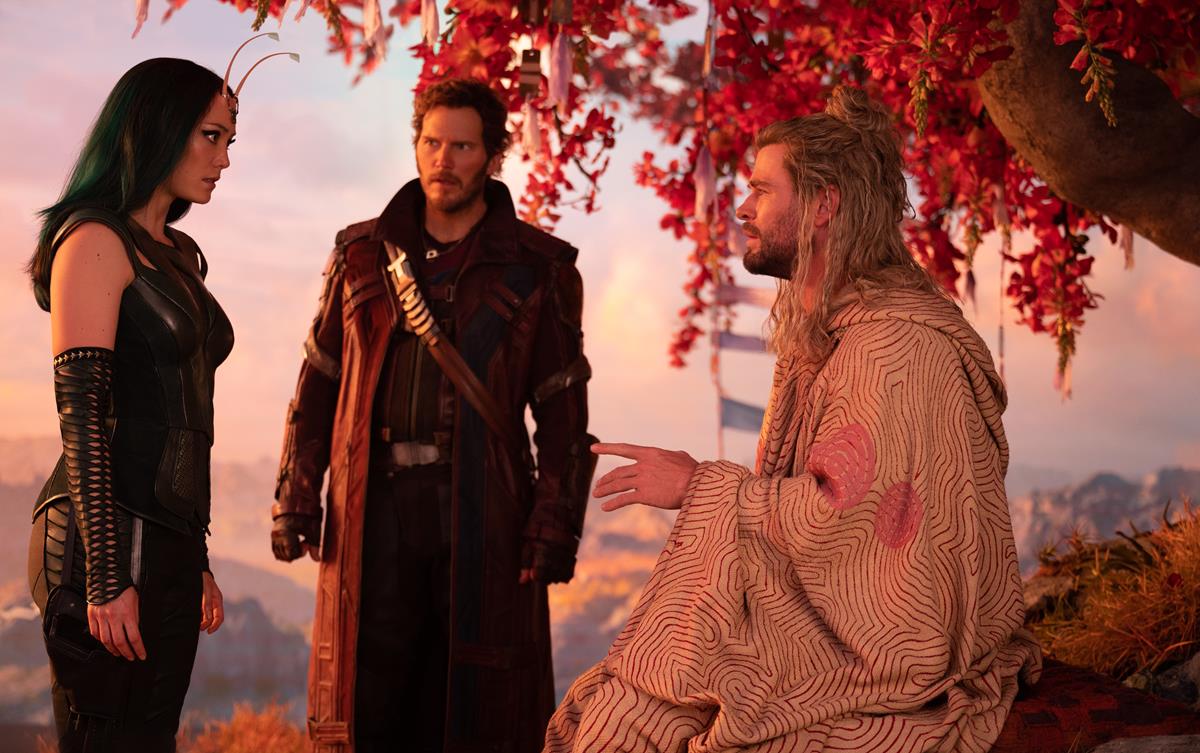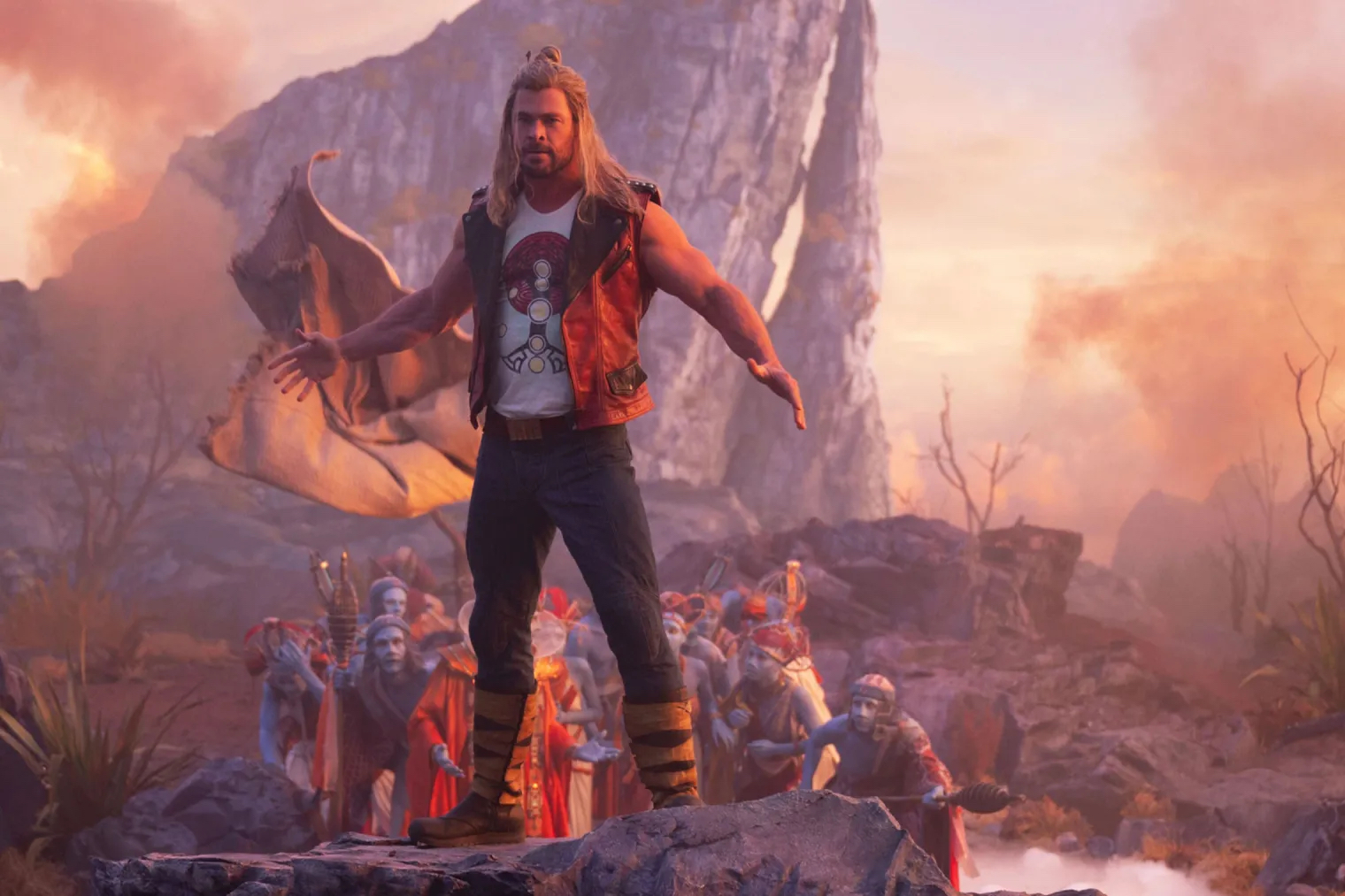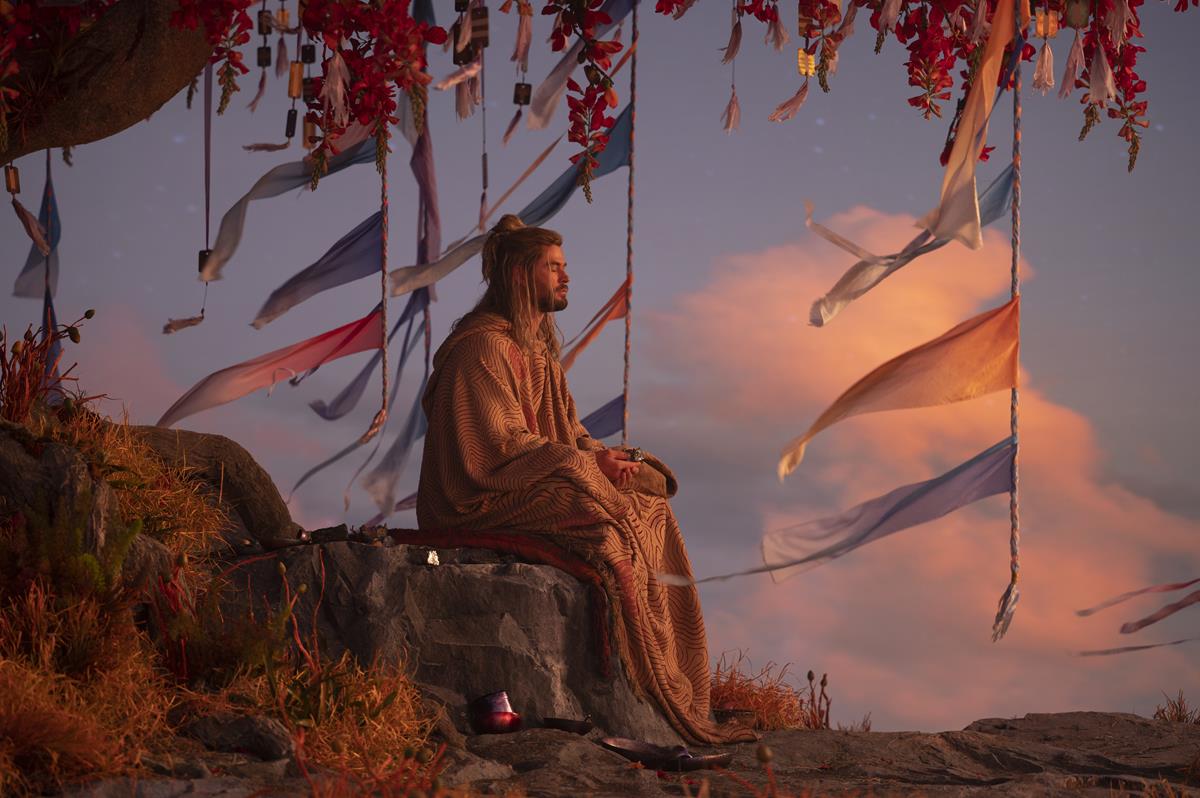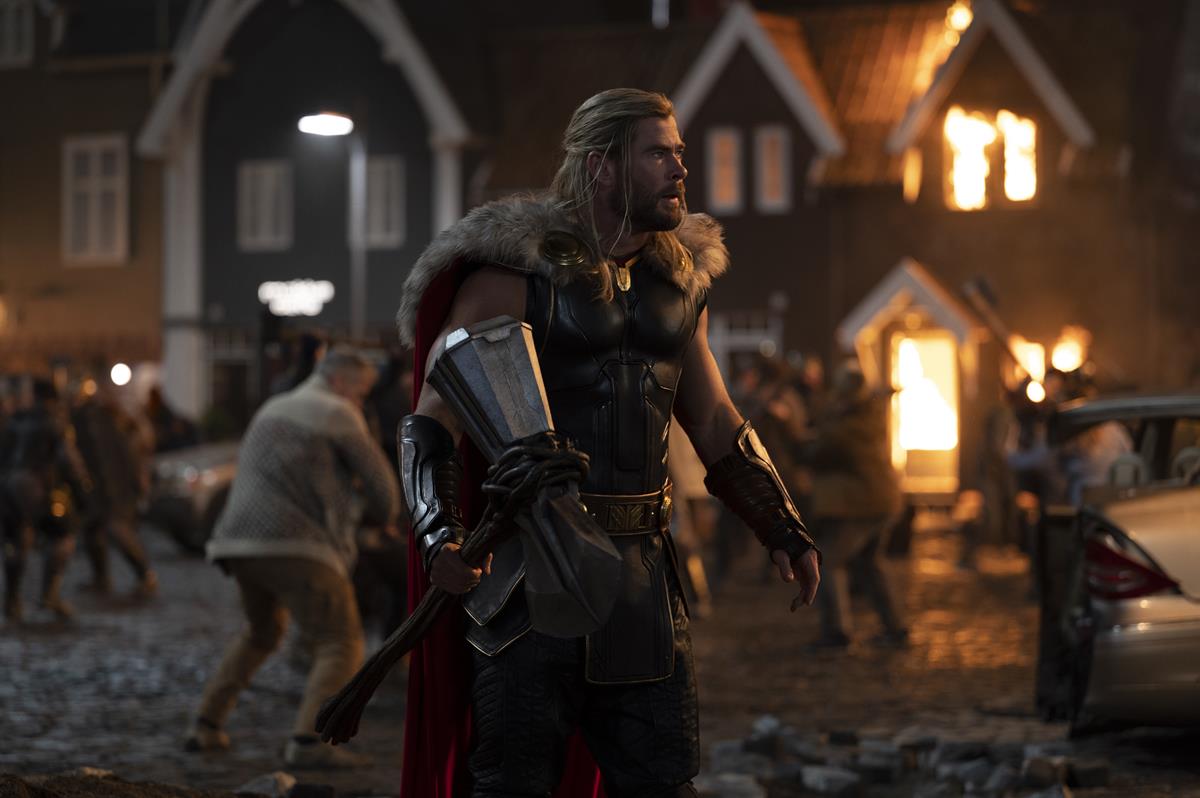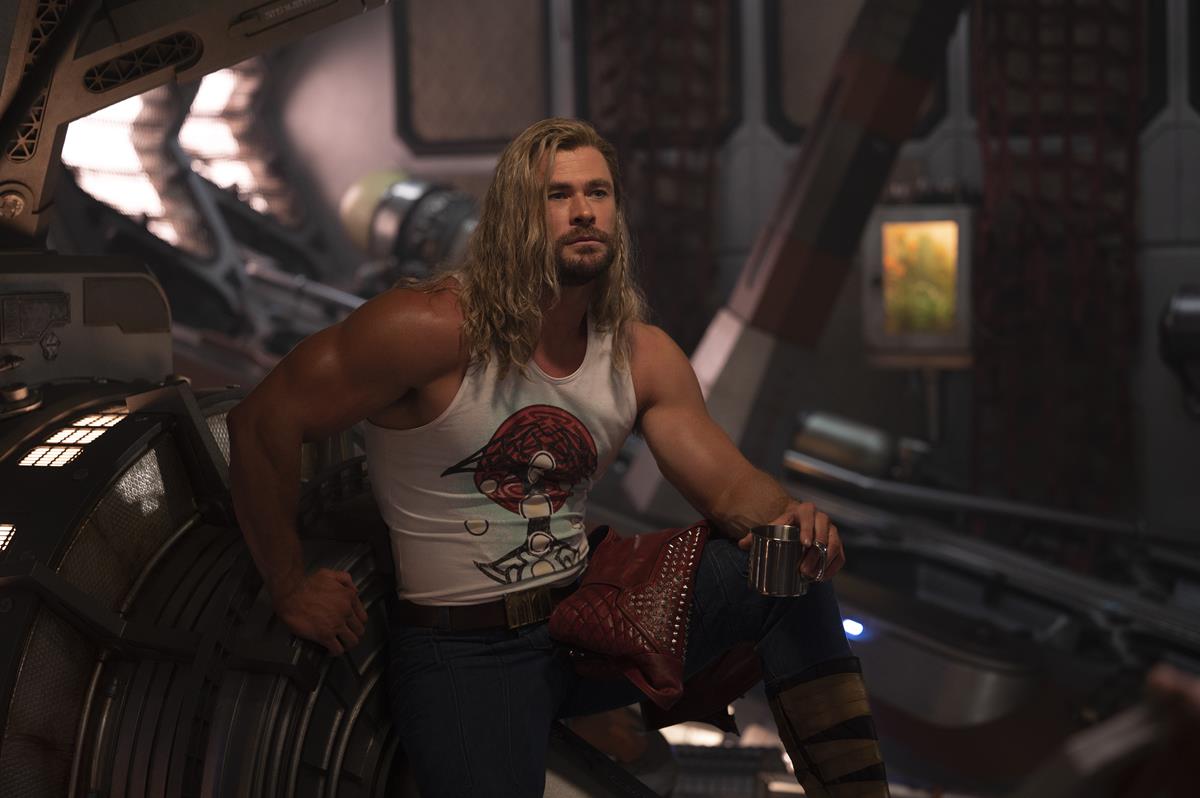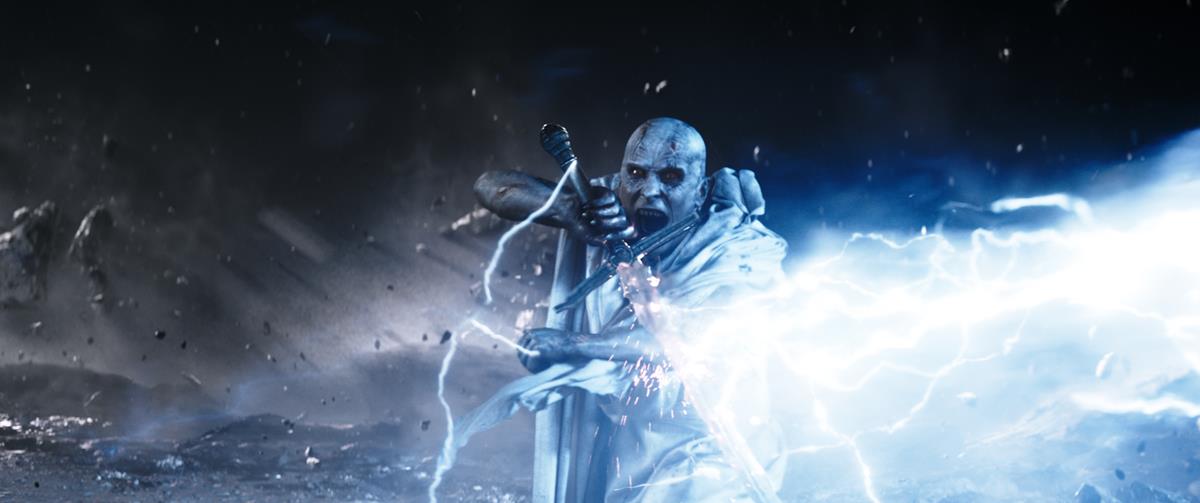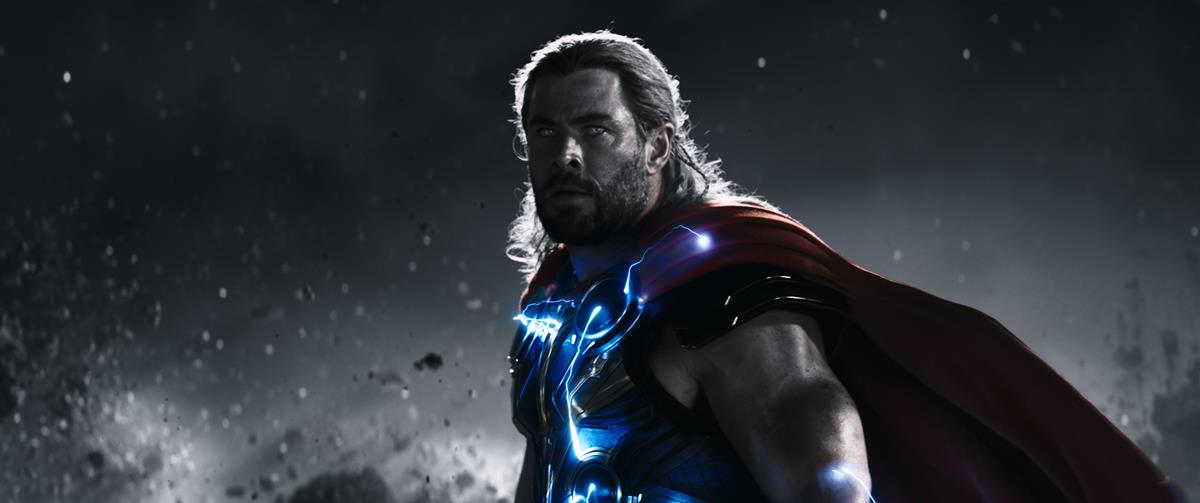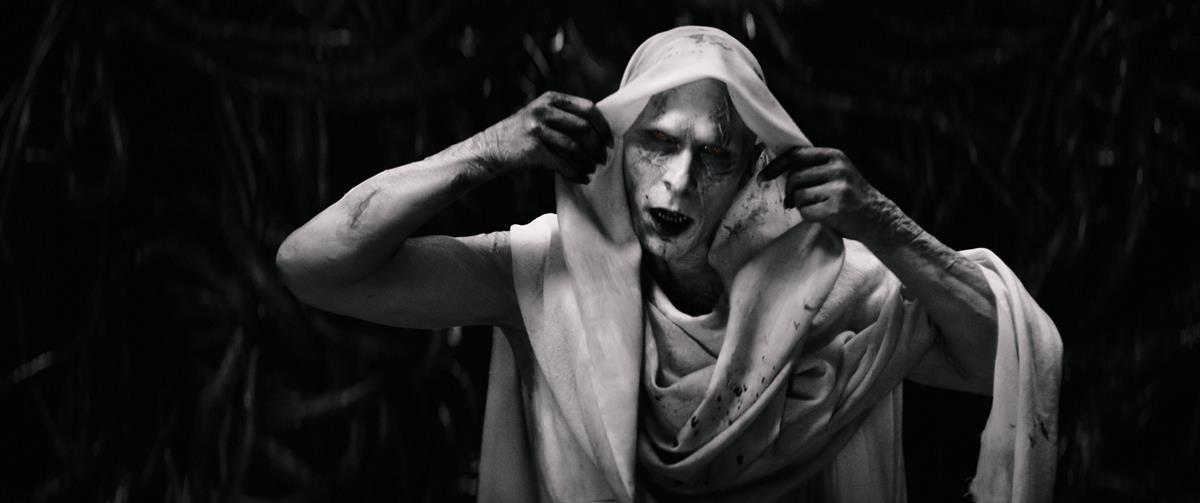
Actors love to work with the new virtual production LED volumes nearly as much as they despise working with green or blue screens. But unlike commenting on keying work with colored screens, about which they generally grouse, the cast and crew happily report back on “The Volume.”
Chris Hemsworth was both the star of Thor: Love and Thunder and an executive producer. Quoted In an article on The Walt Disney Company website, he likened acting in an LED volume to standing on the edge of a cliff looking out at a sunset. “To actually be staring into a sunset certainly pulls out emotions and reactions that you may not get using a blue or green screen.”
He also appreciates the light reflecting back from the screens on to his face. “It’s a beautiful interaction that occurs.”
READ MORE: How Marvel Studios’ ‘Thor: Love and Thunder’ Adopts a New Technology (The Walt Disney Company)
Tessa Thompson, who plays King Valkyrie in the film, puts the effect in more simple terms: “The Volume makes it easier because you don’t have to imagine what you’re seeing.” But she also appreciates the light effects, “The way that it cast light onto our faces and costumes felt really immersive and otherworldly.”
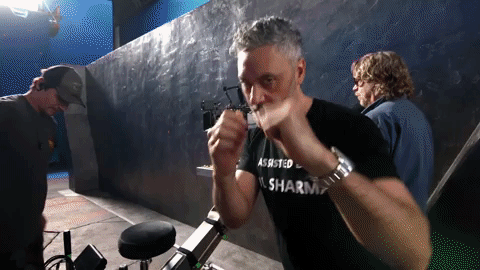
LIGHTS, CAMERA, ACTION! SPOTLIGHT ON FILM PRODUCTION:
From the latest advances in virtual production to shooting the perfect oner, filmmakers are continuing to push creative boundaries. Packed with insights from top talents, go behind the scenes of feature film production with these hand-curated articles from the NAB Amplify archives:
- Savage Beauty: Jane Campion Understands “The Power of the Dog”
- Dashboard Confessional: Ryusuke Hamaguchi’s “Drive My Car”
- “Parallel Mothers:” How Pedro Almodóvar Heralds the New Spanish Family
- “The Souvenir Part II:” Portrait of the Artist As a Young Woman
- Life Is a Mess But That’s the Point: Making “The Worst Person in the World”
There’s no doubt that happy actors make for increased serenity on a set, but the good news of the use for The Volume doesn’t stop there. Marvel’s production staff also had positive things to say about the new tech while shooting the latest Thor movie.
Marvel’s VFX production supervisor Jake Morrison told IndieWire’s Bill Desowitz how game engines and LED volume technology work in sync. “They would build the entire scene up to a certain level, shade it, light it, bake it all in, so the real-time engine can work with the camera.” This technique has previously been employed for VFX, but for the second Thor movie ILM also polished or finished several in-camera shots.
Integrating The Volume into the scene selection for Thor: Love and Thunder became crucial in perfecting the choice of both capture methods — The Volume and physically-built sets. Morrison detailed what technique worked best for which scene. “The Volume helped us create massive scales for the film. One of the biggest Volume sets was Omnipotence City, the home of the gods. When all the actors were in The Volume, they were able to see this incredibly expansive world. It sets the stage for the adventure that the characters are on.”
Physical sets included New Asgard, which was a complete town. “The second you stepped onto it, you would swear you were there in an actual town in Norway,” said executive producer Brian Chapek.
One of the most challenging scenes filmed in The Volume was the Battle of Indigarr. It was a large environment spread out among several StageCraft sets. The backdrop consisted of a pink-orange desert landscape with strange shapes, multiple moons, and nebulae in the sky. (See below.)
Sonia Contreras, ILM’s associate virtual production supervisor, explained the scene’s breakdown: “Part of the work that we do is mocap tracking of cameras and you have spark elements that tend to interfere with the system a bit. The challenge was to track the cameras, masking markers, and being able to get what we needed. We had Thor, the Guardians, some additional stunt actors, and actors who were going to be later replaced with CG characters.”
HOW VIRTUAL PRODUCTION IS TAKING OVER HOLLYWOOD:
Originally employed by only the most technically advanced studios, virtual production has now become ubiquitous, as evidenced by series from The Mandalorian to Our Flag Means Death, as well as feature films like Dune, Spider-Man: No Way Home and The Matrix Resurrections. Gain insights into virtual production techniques from top pros with these hand-curated articles from the NAB Amplify archives:
- Virtual Production and Sort of Real Pirates (?): Making “Our Flag Means Death”
- Virtual Production: What You Need to Know Before You Step Onto the Set
- Denis Villeneuve’s “Dune” Is A Lot. Here’s How He Did It.
- “Fix it in Prep:” The New Mantra for COVID-Safe Virtual Production
- A Virtual Tour of, Yes, a Virtual Production Studio
Refreshingly, working with The Volume also allows for happy accidents, which are always welcome in whatever stage of production. There is a scene with the Bifrost rainbow effect flying by that is reminiscent of hyperspace. When she was asked to make the Bifrost go 20% faster, Contreras inadvertently increased it to 200% instead.
“All of a sudden, you had a crazy Bifrost going by, and Taika liked it so much, he was like, ‘Ah, this is awesome.’” They ended up going faster than 200%.
Of course, director Taika Waititi was no stranger to working with the Volume as he had already experienced the vast virtual set while working on the pirate comedy Our Flag Means Death. “There are disadvantages,” he told Desowitz in a separate interview. “It’s in a room so you can’t get the camera super far back or too high. It doesn’t help with coverage. But it’s a nice way of working. You can control where the sun is in the sky and shoot at magic hour at the same time of day as something else and control that weather. It’s amazing.”
He also saw the benefit for his actors, “You don’t have to put a tennis ball on the ceiling and have them react to it. And for them to say, ‘What am I looking at?’ And you say, ‘No idea, we’ll figure it out in six months.’ ”
READ MORE: ‘Thor: Love and Thunder’ Takes a Hammer to Marvel’s Green Screen Problems (IndieWire)
Marvel may be late to the use of Stagecraft’s Volume, but that has allowed them some advantage in the form of an increased resolution inherent in ILM’s Helios renderer. There is also the benefit of extending the use of physical sets near The Volume. More work can be front-loaded, potentially relegating post-production to more creative refinement.
A perfect example of the benefit of the hike in resolution was when a call came into The Volume team to change the color of a practical plant that had been mistaken for an animated one. “To me, that tells you that the blend was so convincing that you couldn’t tell the difference,” Contreras said. “It’s what we aim for.”
READ MORE: ‘Thor: Love and Thunder’: How Marvel Embraced the LED Volume of ILM’s StageCraft (IndieWire)
Want more? On the Befores & Afters podcast, Ian Failes talks to Carlo Van de Roer and Stuart Rutherford from Satellite Lab about their work on Thor: Ragnarok and Thor: Love and Thunder. Listen to them discuss their use of in-camera lighting and imaging technology in the video below:


